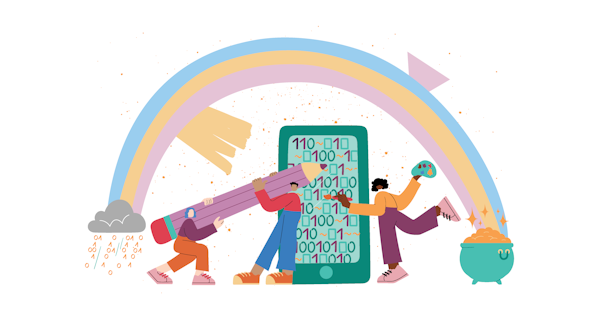Creativity 2.0: advertising’s secret symbiosis
The rise of big data has led to a neglect of creativity in the digital ad space. Why choose one over the other? As part of The Drum’s Digital Advertising Deep Dive, Ben Verschuur, head of performance at digital agency DPDK, explores the rise of data-driven creativity and its potential to transform the ad industry.

DPDK on the marketing opportunities arising in web3
The tensions of the digital world have pushed us into zero-sum thinking: for one side to win, the other must lose. This tendency is apparent in the digital ad sphere, where data has taken precedence and sent creativity to the back seat. But with increasing competition and shrinking customer attention spans, it has become even more important to leverage both creativity and data to be successful.
On average, today’s customers are exposed to 4,000 to 10,000 ads per day. This has led to an overload of information, causing customers to tune out content that isn’t relevant to them.
Thanks to data, advertisers can make smarter decisions about who to target. But even with the right audience, the question of how to target them effectively remains. That’s where creativity comes in.
The marriage of data and creativity
In the past, advertising relied mostly (if not solely) on creativity. That makes sense: creativity is essential for inspiring and engaging the people you want to reach. But the rise of big data changed the game. Advertisers started shifting their focus toward collecting data and optimizing ads. Somewhere along the way, creativity trickled away.
But why choose one over the other when you can have the best of both worlds?
While zero-sum thinking may lead us to believe otherwise, creativity and data actually have a symbiotic relationship. Both benefit from each other when combined correctly. Brands that successfully integrate creativity and data, according to McKinsey, experience growth rates twice as high than those that don’t.
Where creativity can help find innovative ways to stand out and leave a positive impression, data can guide that creativity in the right direction – to the right customers, on the right channels, at the right time. It can even boost creativity by providing insights that can inspire new ideas.
The way I see it, data is an anchor to the chaos that often comes with creativity. It guides and validates our creative efforts, helping us move toward a smarter, more informed way of creative thinking.
Creativity 2.0
At DPDK, creativity is at the heart of everything we do – whether we’re designing a website, presenting a proposal or building a campaign. We even inject creativity into our code.
That isn’t going to change. Creativity holds the ticket to a better tomorrow and is key to differentiation in today’s competitive ad space. What is changing, though, is how we see creativity and its relationship with data.
I like to think of data-driven creativity as creativity 2.0: a new wave of creativity that is informed and guided by data, enabling us to make the most out of both for maximum impact.
Looking to the future
The dawn of web3 and the metaverse is transforming the future of the digital ad landscape. Characterized by decentralization, open access and individual control of data and content, web3 will open new avenues for advertisers to create targeted experiences that provide value to customers.
At the same time, web3 brings the promise of empowering customers to decide how they want to collect, store and share their personal data. They will have the choice to revoke their data at any given moment. As a result, there will be greater pressure on advertisers to establish trust and build strong relationships.
We’re already seeing this pressure with Google’s announcement of the third-party cookie ban. While customers see this move as a positive step toward increased transparency in how advertisers use their data, they’ve also grown accustomed to highly-personalized experiences. That makes it even more crucial to understand their needs and wants, and build direct relationships with them.
Web3 offers the chance to build and nurture these relationships. But success in these new digital environments will stand and fall with how advertisers integrate data and creativity. Industry leaders believe that metaverse advertising will be defined by a balance between visibility and authenticity. Standard, generic ads won’t make the cut. We’ll need to get creative and design experiences that people want. And we’ll need to leverage data to ensure our creative efforts are reaching the relevant audience.
I see this as an opportunity for advertisers to experiment, learn and find what works for them in an increasingly demanding market. It’s a chance to flex our creative muscles again, and engage with customers through valuable content and experiences. Let’s not allow data to replace creativity. Let’s instead embrace data as the fuel to our creative intelligence.
Read more from The Drum’s latest Deep Dive over at our Digital Advertising hub.
Content by The Drum Network member:

DPDK
20 years of transformation, change, innovation, and adaptation. We saw tech emerge and disappear, trends come and go and customer expectations change and grow. Today...
Find out more
